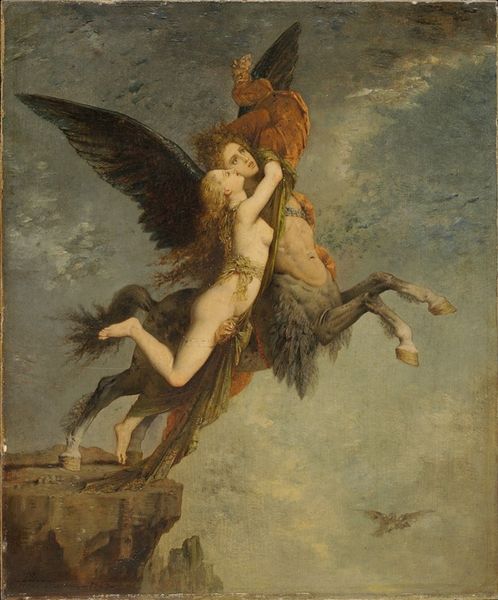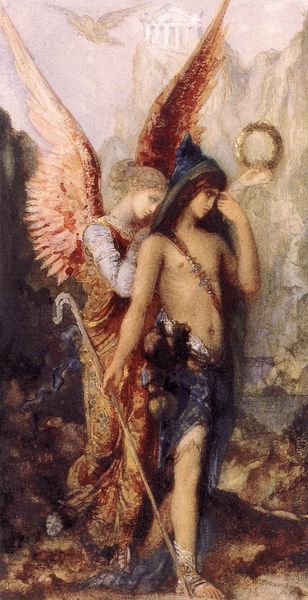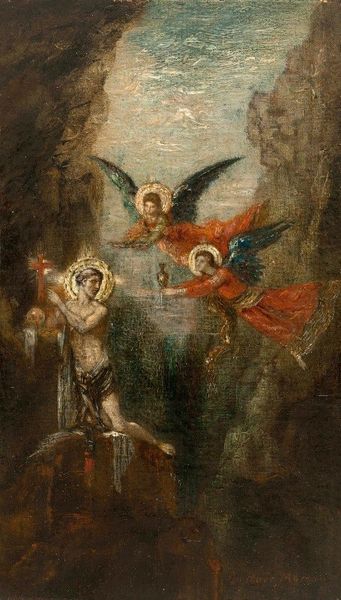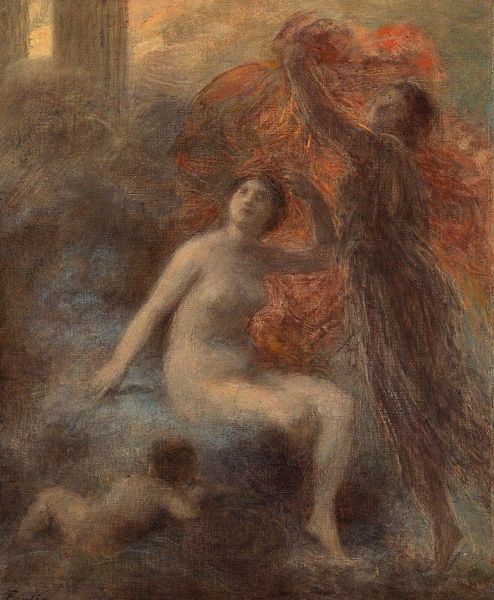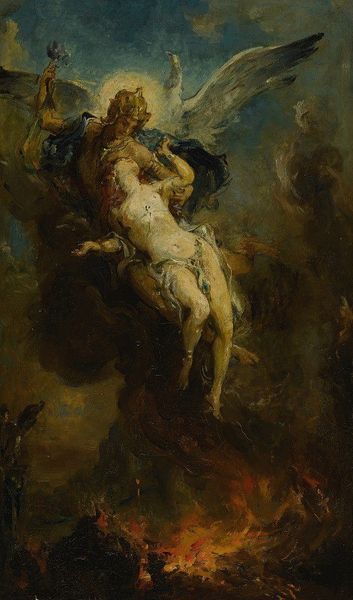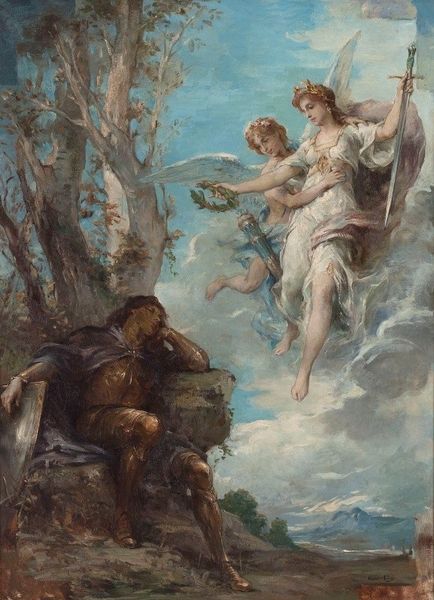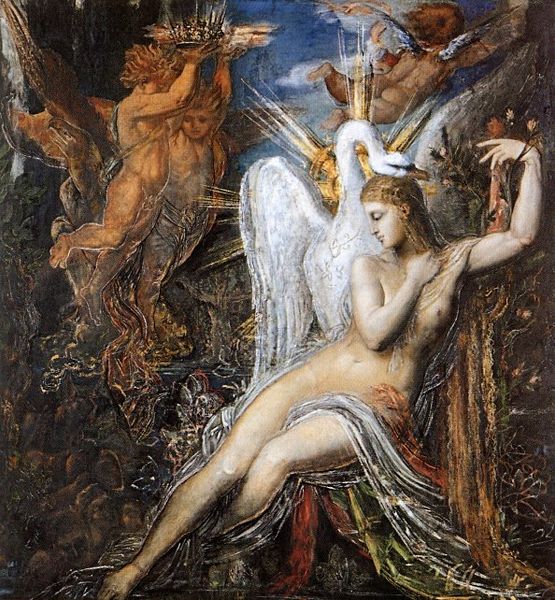
Copyright: Public Domain: Artvee
Editor: This is Gustave Moreau's "Saint Sebastian and the Angel," from around 1876, done in oil paint. There's something ethereal and sorrowful about it. What do you see in this piece? Curator: Well, beyond the immediately visible religious subject, consider Moreau's process. He layered oil paints to create this luminous, almost hallucinatory effect. How does the *application* of materials reinforce the symbolic weight of martyrdom? Editor: I guess the shimmering quality emphasizes the saint's spiritual transcendence. But it seems so deliberately artificial, like stage lighting. Was Moreau making a commentary on the theatricality of religious spectacle? Curator: Precisely! The 'artificiality' directs us to question the constructed nature of religious narratives. The imported pigments, the controlled studio environment... these factors actively shape our interpretation. This isn't a pure representation, it's a crafted artifact. Were the art consumers aware of the origin and the meaning behind all the materials involved in producing such a work? Editor: That's a really interesting point. I never considered the 'labor' aspect involved in producing religious icons such as this one. It makes me rethink the purpose of these portrayals beyond a simple bible story. Curator: Exactly! It highlights the entanglement of faith, labor, and consumption in the 19th century. So, by interrogating its materiality, we reveal a network of production and meaning far beyond the surface narrative. Editor: I’m starting to see how a painting can tell a wider story of its own making and societal context. Thank you! Curator: And I'm delighted you noticed. Approaching art from its material reality makes these complex layers visible.
Comments
No comments
Be the first to comment and join the conversation on the ultimate creative platform.
